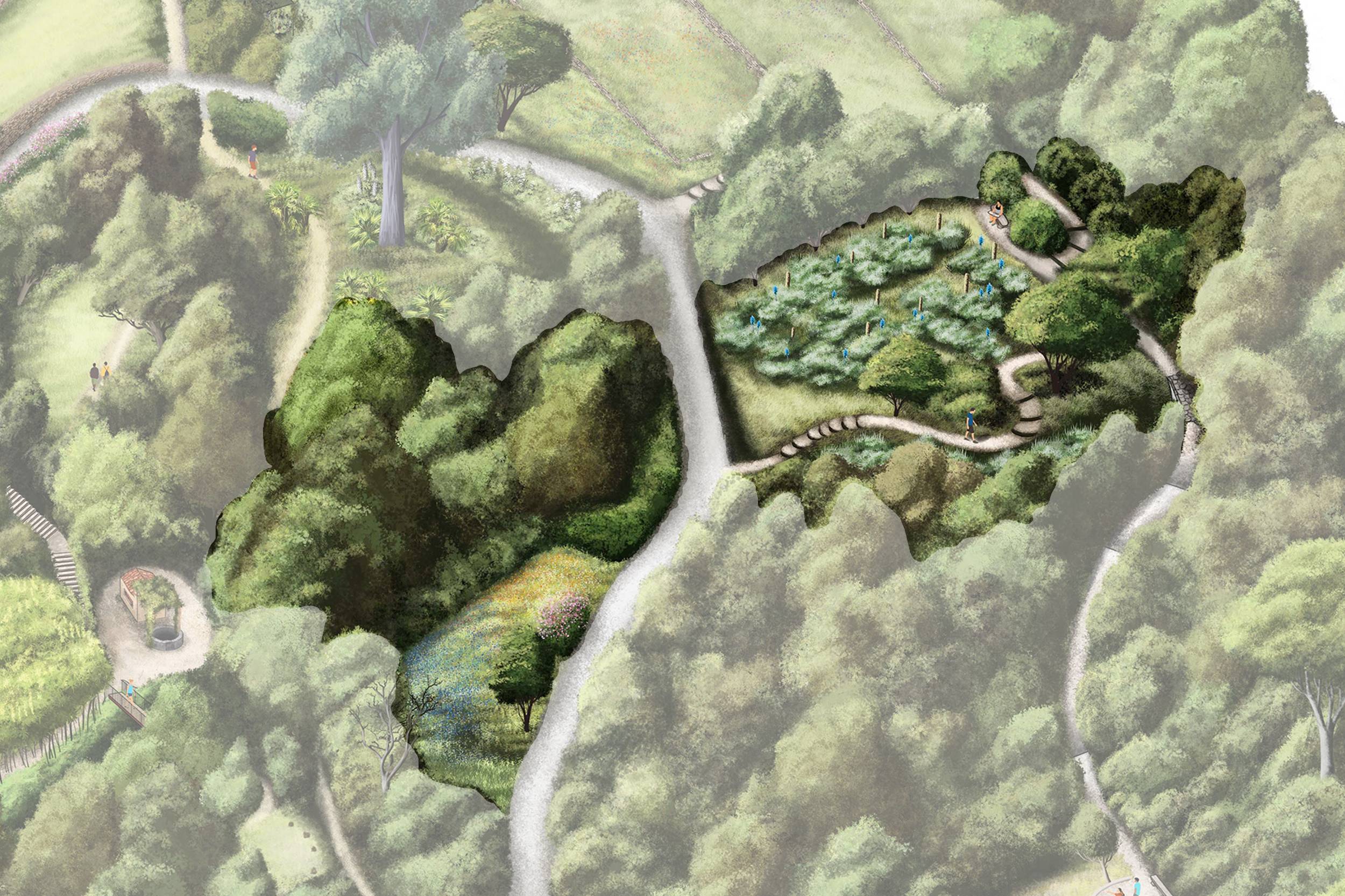Over 4,000 km long, Chile has a very diverse climate. Only Central Chile has a Mediterranean climate.
A number of types of vegetation are evoked at the Domaine du Rayol:
- the Puya moorlands;
- the savannah landscape or Espinal, dominated by Acacia caven;
- the palm groves of the inland regions, with the Jubaea chilensis honey palm.
The Puya moorlands
Firstly, the high-altitude coastal Puya moorlands, or ‘Matorral’, are made up of a large number of thorny species including the Puya. A member of the Bromeliad family, like pineapples, the Puyas cover the ground of the plot in the form of tussocks. When they come into bloom in June, their flowers are spectacular, ranging from metallic blue to fluorescent green, depending on the species. The Puyas also grow alongside the Quisco cacti Echinopsis chilensis. These large-spined cacti can grow up to 10 metres high.
The alstroemeria fields
There are also fields of Chilean alstroemeria, also known as ‘Lily of the Incas’. Their brightly- coloured flowers, which are highly popular with florists, bloom in spring.
A savannah landscape: the ‘Espinal’
Still in the Chilean Central Valley, overgrazing and logging has over time created another type of landscape, a savannah landscape: the ‘Espinal’. It is dominated by a species of mimosa, Acacia caven, a small thorny tree with very fine leaves and yellow flowers.
These landscapes are sparse and open.
Lastly, in the Mediterranean Chilean Garden, palms grow in the cool valleys – the palm groves of the inland regions. The palms that grow here are Jubaea chilensis honey palms.
03. The Puya moorlands
















